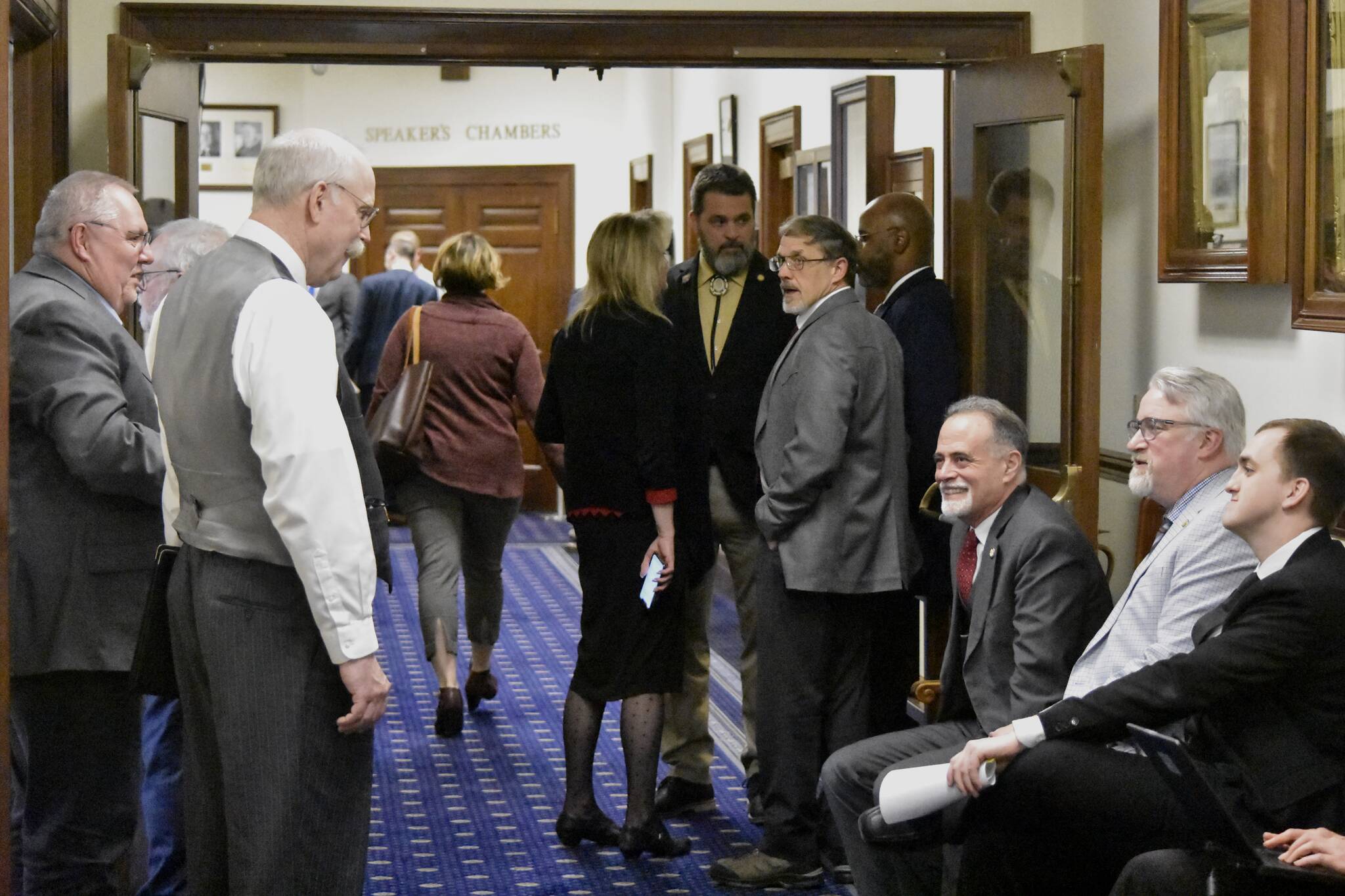With only hours to go before the end of the legislative session at midnight, the Alaska Senate Wednesday passed the final version of the state’s budget bill, leaving only the House of Representatives yet to vote on the bill.
After House members failed to concur on a budget passed by the Senate last week, the state’s final budget bill has been under negotiations by a bicameral budget committee of six lawmakers, three from each body. The conference committee finished its work Tuesday afternoon, and the budget was taken up by the Senate Wednesday.
Senators passed the budget 19-1, with only Sen. Lora Reinbold, R-Eagle River, voting against it.
The budget now only needs to be agreed upon in the House, which was still working its way through dozens of bills before the end of the session at midnight. Shortly after the Senate passed the budget, House members recessed until 5:30 p.m., and members of the House Majority Coalition went into a caucus meeting.
If lawmakers are unable to pass a budget by midnight, they will need to be called into a special session, either by themselves or by the governor. Lawmakers can vote to extend the session by 10 days with a three-quarter vote in each body.
In the Senate
Senators from both parties said the bill reflected a spirit of compromise, and while it is a large a budget, it contained funding for desperately needed infrastructure projects throughout the state.
The final versions of the combined operating and capital budget bill and the mental health budget bill contained roughly $17.8 billion in total spending, Senate Finance Committee co-chair and member of the conference committee Bert Stedman, R-Sitka, said on the floor.
Of that nearly $17.8 billion, Stedman said $9.5 billion came from the state’s unrestricted general fund; $972 million from the designated general fund and $5.4 billion in federal spending. The state’s operating budget, according to Stedman, was roughly $13.4 billion — with $7 billion UGF spending — while the capital budget was $3.7 billion with $1.1 billion in UGF funds.
[Committee compromises on PFD in budget plan]
The Senate’s initial budget bill contained a provision for a Permanent Fund dividend based on the state’s statutory formula, set in law but not followed by lawmakers since 2016, following a drop in the price of oil. In addition to that payment, which would have been roughly $4,200, Senators also approved an energy relief payment of $1,300, for a total of $5,500 to each Alaskan.
But lawmakers in both bodies were critical of that plan, which they said relied too heavily on the price of oil remaining high. The conference committee lowered the PFD payment to $2,500, a so-called 50-50 payment, based on taking half of the state’s annual percent of market value draw from the Alaska Permanent Fund. But the committee also approved a $1,300 energy relief payment, which Stedman said will likely be paid along with the PFD for a single payment of roughly $3,850 to each eligible Alaskan.
However, the committee split the fund sources of the energy payment, drawing half from the Constitutional Budget Reserve, which requires a three-quarter vote in each body. Senators voted to fund the full payment from the CBR in a vote of 15-5 with Sens. Click Bishop, R-Fairbanks; Lyman Hoffman, D-Bethel; Reinbold; Stedman and Natasha von Imhof, R-Anchorage, voting against drawing from the CBR.
Following the vote, Stedman said the 50-50 PFD was not sustainable, and his vote reflected a desire to keep money in the state’s savings account for when the price of oil inevitably drops. Lawmakers have been deeply divided over the amount of the PFD, but little progress has been made on agreeing to a new formula.
Many lawmakers who’ve advocated for a statutory PFD in the past have compromised on the 50-50 plan, saying the formula should be put in the Alaska State Constitution to ensure payments remain steady. But Stedman and other members of the Senate Finance Committee have noted a 50-50 payment is not sustainable without roughly $800 million in new revenues or cuts to the state’s budget.
It was because the state hadn’t cut enough from its budget that Reinbold said she couldn’t support the budget.
“Meaningful budget cuts are missing, in particular (the Department of) Health and Social Services,” Reinbold said. “The bottom line is (the budget) is not following the statute, it’s basically a billion dollars out of the pockets of Alaskans.”
But other lawmakers who advocate for a full PFD said the bill had a sizable dividend and funding for issues critical to Alaskans.
“I want the statutory dividend,” said Sen. Mike Shower, R-Wasilla, “Sometimes you don’t always get what you want, but I can’t vote no on something that is so close to a statutory dividend.”
Once passed by both bodies, the budget will go to the governor who has the power to veto line items within the budget.
• Contact reporter Peter Segall at psegall@juneauempire.com. Follow him on Twitter at @SegallJnuEmpire.

